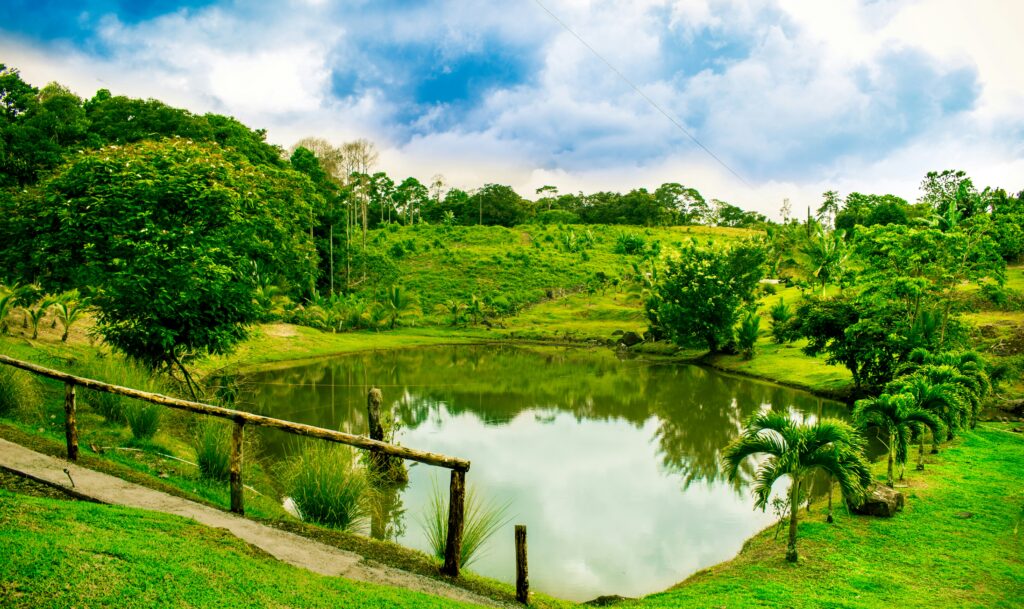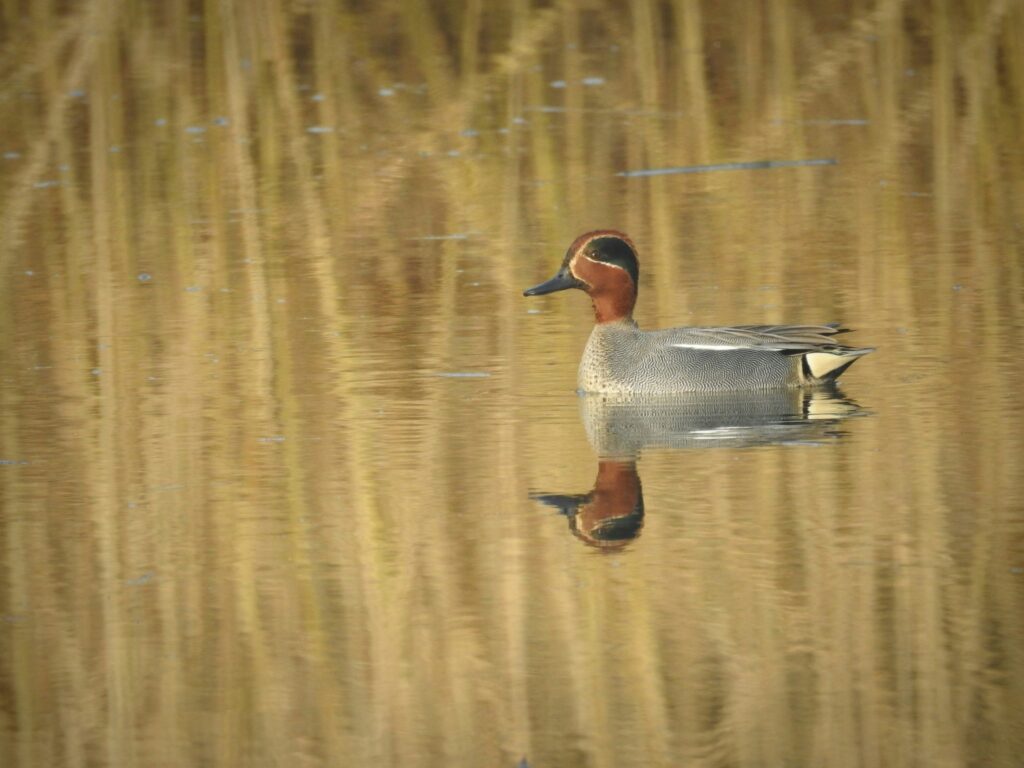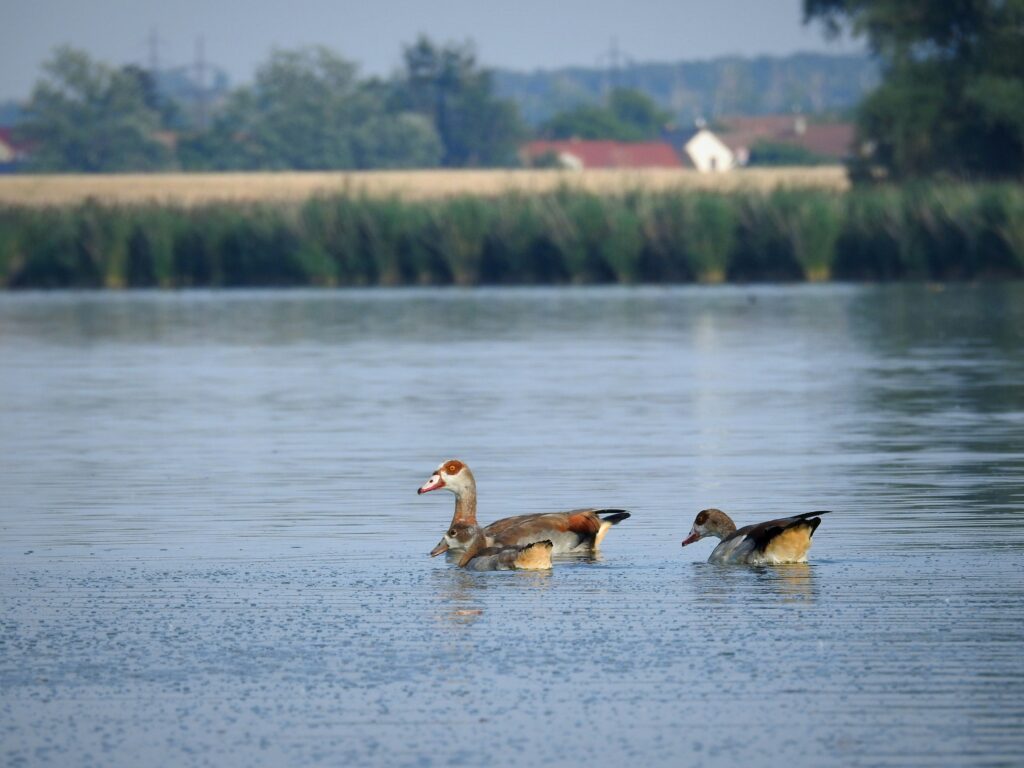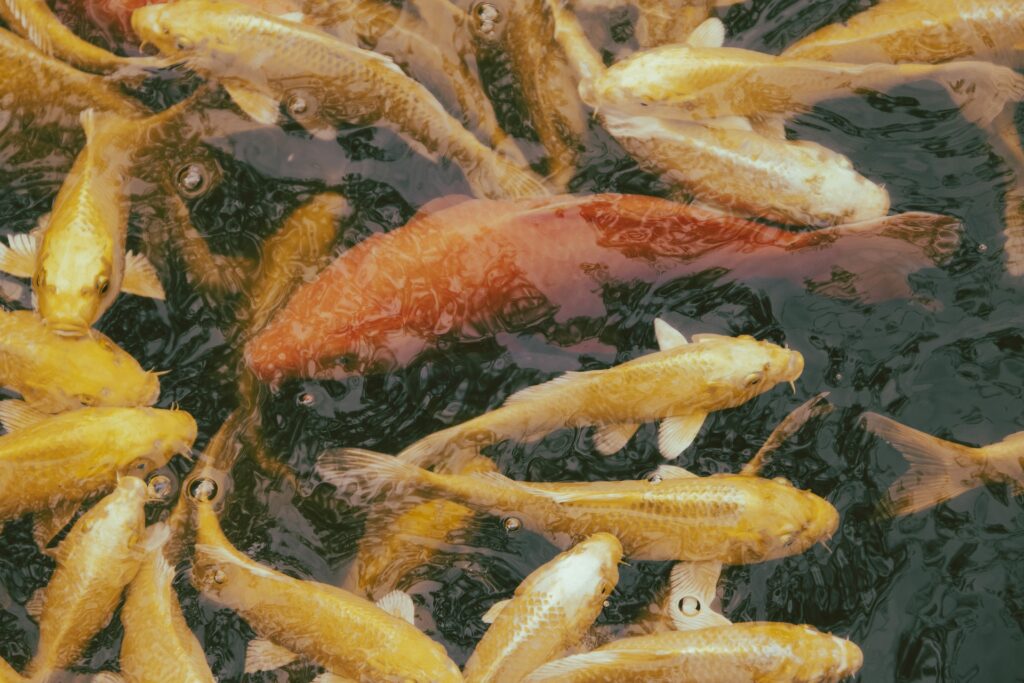We all have a fascination with the wonders of nature, and one particular aspect that captivates us is the beauty and tranquility of a fishpond. What are the basics of a fishpond, what is actually needed. Whether you have a spacious backyard or a small balcony, setting up a fishpond can bring a touch of serenity to your living space.
In this article, we will explore the fundamental elements that make a fishpond thrive, including essential equipment, suitable fish species, and proper maintenance techniques. By understanding the basics of a fishpond, you can create a harmonious aquatic habitat that not only enhances the aesthetics of your home but also provides a haven for these enchanting aquatic creatures.
Location
When it comes to setting up a fishpond, the location plays a crucial role in its success. First and foremost, considering sunlight is essential. A fishpond should ideally be placed in an area where it can receive adequate sunlight throughout the day.
Sunlight is vital for algae growth, which provides a natural food source for fish. However, it is also important to ensure that the fishpond has areas of shade, to keep the water temperature from getting too high during the hottest part of the day. Finding the perfect balance of sunlight and shade will contribute to the overall well-being of the fishpond.
Accessibility is another crucial factor to consider when choosing the location for your fishpond. You want it to be easily accessible for maintenance and feeding. It should be located in an area that allows for easy transport of equipment, such as nets or water testing kits.
Additionally, having a fishpond closer to your home or a water source can make it more convenient for monitoring and ensuring the pond’s proper functioning.
Design and Construction
The design and construction of a fishpond are instrumental in creating a suitable habitat for the fish. Firstly, the size of the pond should be considered. The size of the pond is determined by the available space and the number of fish you plan to keep. It is essential to provide enough room for the fish to swim freely and exhibit natural behaviors.
The shape of the fishpond is another design aspect to be considered. Irregular shapes with curves and corners can add aesthetic appeal to the pond, while a more straightforward rectangular shape may be more practical for maintenance purposes. Balancing both form and function is key when deciding on the shape of your fishpond.
The depth of the pond is an essential factor to consider when constructing a fishpond. It is crucial to provide different depth zones to cater to the needs of various fish species. Shallow areas allow for basking and spawning, while deeper areas provide refuge during extreme temperatures.
Materials play a vital role in the construction of a fishpond. The most commonly used materials include concrete, preformed pond liners, and flexible pond liners. Each material has its advantages and considerations, such as durability, cost, and ease of maintenance. Selecting the right material will contribute to the longevity and functionality of your fishpond.

Water Source
Having a reliable water source is crucial for the success of a fishpond. There are two main options to consider: a natural water source or an artificial water source.
A natural water source, such as a spring, stream, or well, can provide a constant supply of fresh water. It is important to ensure that the water source is clean and free from pollutants. Regular water quality testing is necessary to maintain optimal conditions for the fish.
An artificial water source, such as a tap or hose connection, can also be used to fill the fishpond. However, it is essential to consider the water source’s quality and make any necessary adjustments to ensure it is suitable for the fish. Treating tap water with a dechlorinator or allowing it to sit for 24 hours to let the chlorine evaporate is recommended before adding it to the fishpond.
In addition to natural and artificial water sources, a water supply system can be installed to ensure a consistent flow of water. This can include features such as a water pump, filter, and circulation system, which can help maintain proper water quality and oxygenation in the fishpond.
Aeration
Aeration is crucial for maintaining a healthy fishpond environment. It refers to the process of adding oxygen to the water. Adequate oxygen levels are essential for the survival and health of the fish, as well as for the overall stability of the ecosystem within the pond.
Proper aeration prevents oxygen depletion, which can lead to stress and even death of the fish. It also promotes the breakdown of organic matter and helps control the growth of algae. Additionally, aeration helps circulate the water, reducing the likelihood of stagnant areas and improving overall water quality.
There are various types of aeration systems available for fishponds. One common method is the use of pond fountains or sprayers that create splashing and agitation to introduce oxygen into the water.
Another option is the use of air pumps and diffusers, which release streams of tiny bubbles to increase the surface area of contact between the water and the atmosphere. Choosing the right aeration system depends on the size and depth of the fishpond, as well as the specific needs of the fish species.

Filtration
Filtration plays a vital role in maintaining optimal water quality in a fishpond. There are three main types of filtration to consider: mechanical filtration, biological filtration, and chemical filtration.
Mechanical filtration involves removing physical debris and particles from the water. This can be achieved through the use of filters, skimmers, or screens that trap larger particles before they can settle and decompose. Regular cleaning of these filters is necessary to ensure their effectiveness.
Biological filtration utilizes beneficial bacteria to break down harmful substances, such as ammonia and nitrites, into less toxic compounds. This process occurs naturally in the fishpond, but can be enhanced through the use of biological filter media or by incorporating plants and algae that help absorb excess nutrients. Establishing and maintaining a healthy biological filtration system is crucial for the overall well-being of the fish.
Chemical filtration involves the use of specific substances or treatments to remove contaminants or improve water quality. This can include the use of activated carbon, which helps remove impurities and odors, or water conditioners that neutralize harmful substances and maintain appropriate pH levels.
Chemical filtration should be used sparingly and as a supplement to mechanical and biological filtration.
Water Quality
Monitoring and maintaining optimal water quality is essential for the health and well-being of the fish in a fishpond. Several key parameters should be regularly tested and adjusted as necessary.
Temperature plays a crucial role in fish health and metabolism. Different fish species have specific temperature requirements, so it is important to maintain the appropriate temperature range for your chosen species.
The pH level of the water indicates its acidity or alkalinity. Most fish species prefer a pH range between 6.5 and 8.5, although some species may have specific pH preferences. Regular testing and adjustment of pH levels are necessary to ensure a stable and suitable environment for the fish.
Ammonia and nitrate levels should also be regularly monitored. Ammonia is highly toxic to fish and can accumulate from fish waste and decomposing organic matter. Nitrate is a byproduct of the breakdown of ammonia and can be harmful at high levels. Keeping ammonia and nitrate at safe levels is crucial for fish health.
Dissolved oxygen levels indicate the amount of oxygen available in the water. Fish require sufficient oxygen to breathe, and low oxygen levels can lead to stress and even death. Proper aeration, as discussed earlier, is crucial for maintaining adequate dissolved oxygen levels in the fishpond.
Regular water testing, using appropriate test kits, should be conducted to ensure proper water quality parameters are maintained. Any necessary adjustments can then be made, such as water changes, adding beneficial bacteria, or adjusting pH levels, to keep the fishpond in optimal condition.

Fish Selection
Selecting the right fish species for your fishpond is essential for a successful and harmonious ecosystem. Consider the following factors when choosing fish for your pond.
Species selection should be based on various factors such as climate compatibility, water temperature requirements, and individual preferences. It is important to choose fish species that are suitable for your climate to ensure their survival throughout the seasons.
Compatibility among fish species is important to maintain a balanced ecosystem. Some fish may be aggressive towards others, which can lead to stress and potential harm. Researching the compatibility of different species and their behavior is crucial for selecting fish that will coexist peacefully in the fishpond.
Quantity is another important consideration. Overstocking the fishpond can lead to poor water quality and overcrowding, which can negatively impact the fish’s health. Follow guidelines regarding fish stocking density to ensure a balanced and sustainable fish population.

Feeding
Proper feeding practices are vital for the health and growth of the fish in your fishpond. Consider the following aspects when establishing a feeding routine.
There are various types of fish food available, including pellets, flakes, and live or frozen foods. The selection of fish food should be based on the specific dietary needs of the fish species you have chosen. Research their natural feeding habits and provide a balanced diet that includes a combination of proteins, carbohydrates, and vitamins.
Establishing a feeding schedule is important to prevent overfeeding and maintain water quality. Overfeeding can lead to excess waste, nutrient buildup, and poor water quality. Feeding once or twice a day, in small portions that can be consumed within a few minutes, is usually sufficient for most fish species.
Maintenance
Regular maintenance is necessary to ensure the longevity and health of your fishpond. Consider the following aspects when establishing a maintenance routine.
Water testing is a critical aspect of fishpond maintenance. Regularly test water parameters such as temperature, pH, ammonia, nitrate, and dissolved oxygen levels. This will allow you to identify any potential issues early on and take necessary corrective measures.
Cleaning the fishpond is necessary to remove any debris, fallen leaves, or excess fish waste. Use a pond net or skimmer to remove floating debris, and consider using a pond vacuum or siphon to clean the bottom of the pond. Regular cleaning will help maintain proper water quality and prevent the buildup of harmful substances.
Weed control is essential to prevent overgrowth of aquatic plants that can negatively impact water quality and fish health. Regularly inspect the fishpond for any unwanted plants and remove them promptly. Introducing beneficial plants, such as lilies or floating plants, can help control excessive algae growth and provide shade for the fish.
Safety Measures
Implementing safety measures in and around your fishpond is crucial for the well-being of both the fish and any other potential users or visitors. Consider the following safety measures.
Fencing around the fishpond can help prevent accidental falls or access by unauthorized individuals, especially if you have young children or pets. Ensure the fencing is secure and has a self-closing gate to prevent any accidental entry.
Netting can be used to cover the fishpond, particularly if you live in an area with predatory birds or other animals that may pose a threat to the fish. The netting should be strong enough to prevent any animals from entering while still allowing adequate airflow and sunlight.
Installing adequate lighting around the fishpond area improves visibility and safety, particularly during the evening or night time. This can help prevent accidents and deter unwanted visitors.
Predator control is essential to protect the fish from potential threats. Consider installing motion-activated sprinklers or using other deterrents to keep predators such as raccoons or herons away from the fishpond.
What are the Basics Of A Fishpond
By considering these basics of a fishpond, you can create a thriving and enjoyable aquatic habitat for your fish. Remember to regularly monitor and adjust various parameters to ensure optimal conditions for your fish’s health and well-being. With proper care and maintenance, your fishpond will provide endless hours of enjoyment for both you and your aquatic inhabitants.
if you enjoyed this article about What are the basics of a fishpond, then please take a look at ‘Is It Hard To Maintain A Fish Pond‘.
